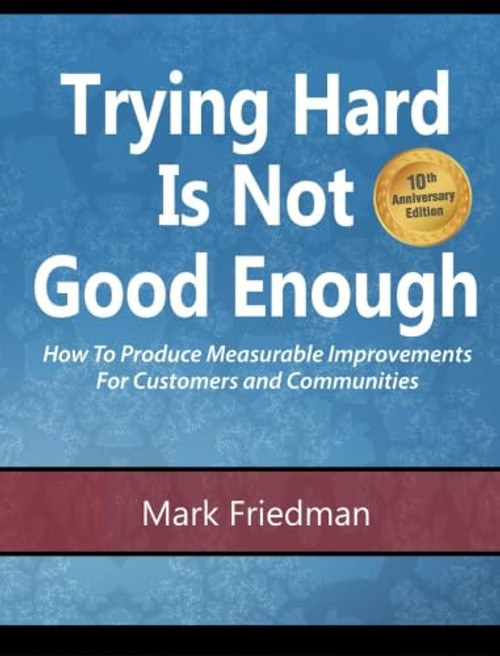This is the 10th Anniversary Edition of Mark Friedman's acclaimed book about Results-Based Accountability (RBA) also known in parts of the UK as Outcomes-Based Accountability (OBA). Over 75,000 copies sold and in use around the world. This is a "how to" book for government and nonprofit agencies working at the city, county, state, and national levels to improve community quality of life and the performance of program services. RBA is a common sense approach that replaces all the overly-complex and jargon-laden methods foisted on us in the past. The methods can be learned and applied quickly. And all the materials are free for use by government and non-profit organizations. In addition to providing practical methods, the book also makes a contribution to social theory by explaining the contribution relationship between program performance and community quality of life. As such it is a valuable tool for both program administrators and evaluators. The RBA framework has been used in all 50 U.S. states and numerous countries around the world. Additional information about RBA can be found on the FPSI website resultsaccountability.com and in the book sequel: Turning Curves, An Accountability Companion Reader. (For those who already have the 2005 or 2009 edition of Trying Hard Is Not Good Enough, please note that there is no change in the message and structure of RBA, and the 2005, 2009 and 2015 editions can be used concurrently.) "BOOK CLUB" or UNIVERSITY CLASS nine session approach: Session 1: Prologue, Introduction and Chapter 1 (16 pages ): Session 2: Chapter 2: The Building Blocks of RBA: (22 pages): Session 3: Chapter 3: Population Accountability: (26 pages): Session 4: Run the Population Turn the Curve Exercise in TH Appendix E Session 5: Chapter 4: Performance Accountability: (32 pages) Session 6: Run the Performance Turn the Curve Exercise in TH Appendix E Session 7: Chapter 5: Putting Population and Performance together: (7 pages) Session 8: Chapter 6: Management Budgeting and Strategic Planning as a Single system: (21 pages) Session 9. Chapter 7: Implementation Issues and Challenges, Closing and Epilogue: (26 pages) In each session the agenda should be simple. What did you learn? How could we use this? The same method can be used for the essays in the Companion Reader.
Trying Hard Is Not Good Enough 10th Anniversary Edition: How to Produce Measurable Improvements for Customers and Communities
$11.01 - $30.06
- UPC:
- 9781516971626
- Maximum Purchase:
- 2 units
- Binding:
- Paperback
- Publication Date:
- 9/3/2015
- Author:
- Friedman, Mark
- Language:
- English: Published; English: Original Language; English
- Edition:
- Anniversary
- Pages:
- 202






